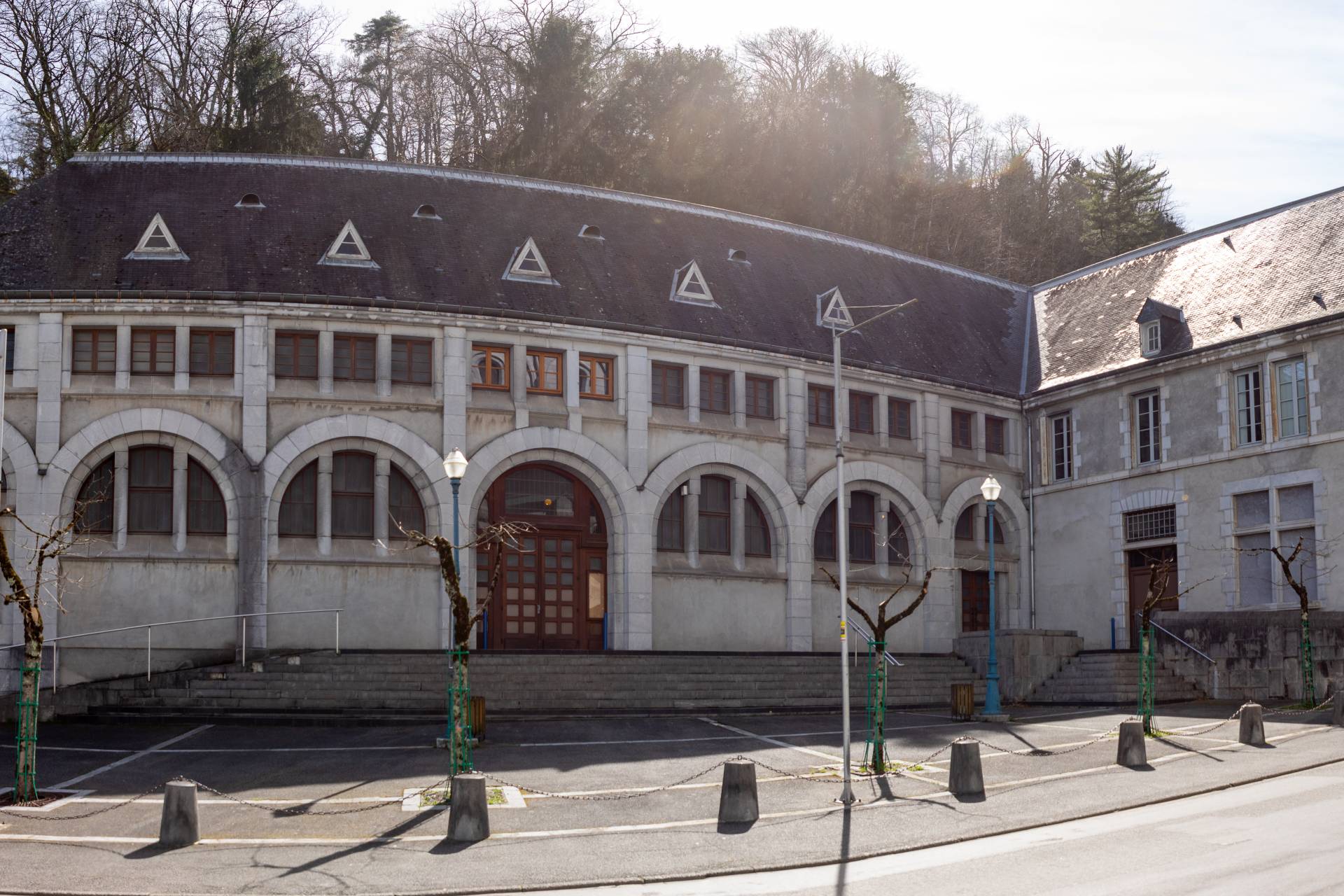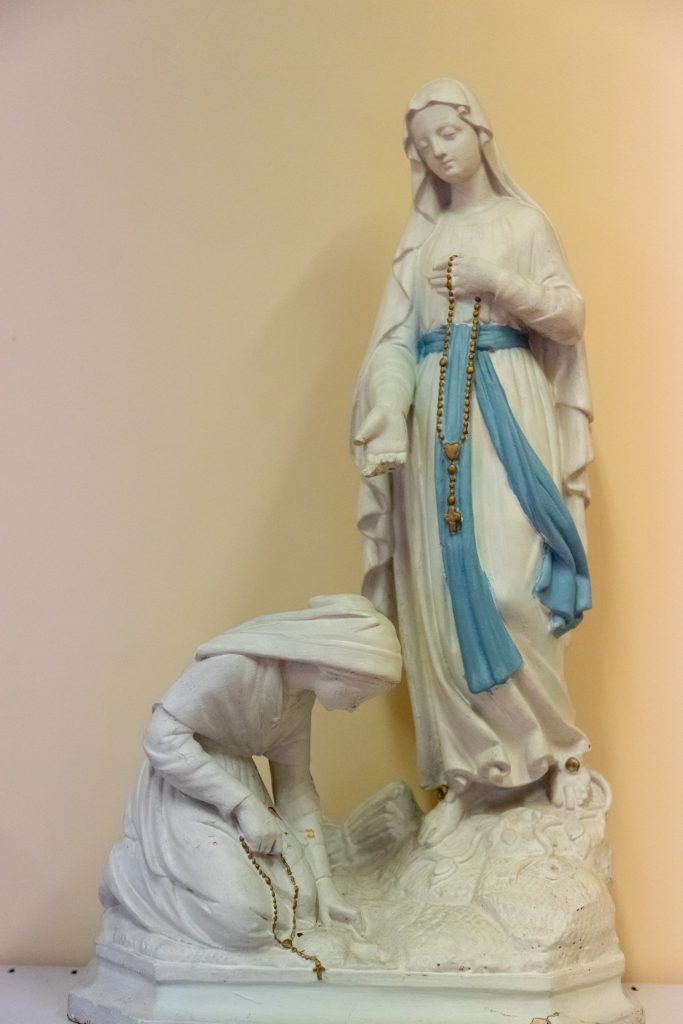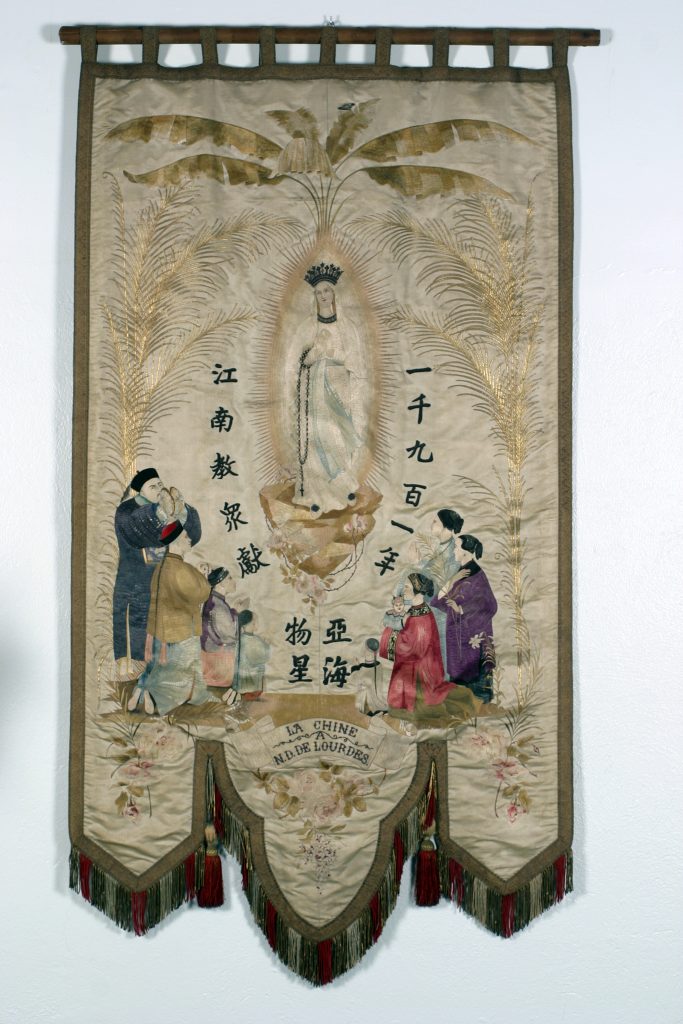
On Friday 19th September, the Sanctuary of Lourdes officially opened an Historical Resource Centre (HRC).
The project was launched during the European Heritage Days and is part of a wider initiative to protect and promote the rich heritage of the Sanctuary.
Previously scattered across several sites, the Sanctuary’s collections are now housed in a single location, designed to meet the highest conservation standards. The HRC brings together the movable and written heritage: ancient textiles, statuary, liturgical objects, ex-votos, paintings, photographs, as well as a wealth of archives and documentary collections.
The centre is equipped with disinfection chambers, dust removal and sorting areas, and climate-controlled storage areas, in compliance with the recommendations of the Vade-mecum of Preventive Conservation (C2RMF) “This project addresses a strategic objective: to protect a unique historical asset while making it accessible to as many people as possible,” points out Robin Dupont, Heritage Curator at the Sanctuary.




In addition to its role in conservation, the HRC is a genuine cultural and scientific hub. It offers an exhibition space designed to showcase the Sanctuary’s treasures, from its collection of 300 processional banners and historic chandeliers to reliquaries and the famous crutches that were left at the Grotto by pilgrims who had been healed.
Until the end of the year, it will host its first temporary exhibition: ‘Goudji in Lourdes’.
Opening hours are from 9:00 a.m. to 12 noon and from 2:00 p.m. to 5:00 p.m.
The centre also aims to be a place of reference open to researchers, students and enthusiasts. With over a linear kilometre of archives and nearly 17,000 titles in its library, including a Marian library that is unique in France, the HRC is becoming a point of reference for the study of theology and Marian devotion.
‘The archives and libraries are open to everyone, researchers and pilgrims alike. They constitute a living memory of the Sanctuary and its influence,’ explains Nicolas Dargegen, Head of Archives and Libraries.

In Lourdes, heritage is not static: the liturgical objects preserved at the HRC (sacred vessels, liturgical vestments and altar furnishings) are used regularly during ceremonies. Through this initiative, the Sanctuary aims to combine preservation of the past with openness to the future, affirming its commitment to passing on its spiritual and historical heritage to future generations. A heritage which, as its custodians remind us, ‘also belongs to its pilgrims’.
Button : Support the Sanctuary’s projects by making a donation.

* Rehaussement de la réduction d’impôt pour les dons effectués au profit des associations cultuelles entre le 2 juin 2021 et le 31 décembre 2022 : vote définitif de la mesure dans la loi de finance rectificative n° 2021-953 du 19 juillet 2021. L’article 18 prévoit que le taux de la réduction d’impôt prévue au 1 de l’article 200 du code général des impôts est porté à 75 % pour les dons et versements, y compris l’abandon exprès de revenus ou produits, effectués entre le 2 juin 2021 et le 31 décembre 2022, au profit d’associations cultuelles ou d’établissements publics des cultes reconnus d’Alsace-Moselle. Les versements réalisés en 2021 sont retenus dans la limite de 554 euros. Pour les versements réalisés en 2022, cette limite est relevée dans la même proportion que la limite supérieure de la première tranche du barème de l’impôt sur le revenu de l’année 2021. Le montant obtenu est arrondi, s’il y a lieu, à l’euro supérieur. Il n’est pas tenu compte de ces versements pour l’application de la limite de 20 % du revenu imposable. Précision : ce plafond de 554€ est bien distinct de celui dit “amendement Coluche” qui permet de bénéficier d’une réduction à 75% pour certaines associations caritatives et humanitaires dites « organismes d’aide aux personnes en difficulté ». Il est bien possible de cumuler ces deux avantages.